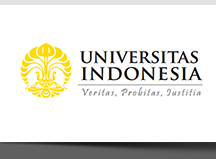Abstract
Antenatal care (ANC) is a compulsory program in Indonesia with minimally 4 times visits, unfortunately, regular Antenatal care visit at Kanjillo health center, South Sulawesi, Indonesia is still low. Most of the Low Birth Weight (LBW) cases in Indonesia happened in a rural-areas, where most of the women conducted the first visit ANC on the third trimester. This study aimed to determine the cut-off point of mother’s last trimester pregnancy weight for predicting as well as preventing low birthweight outcomes in the community. The research design was cross-sectional with secondary data taken from the Kanjilo health center, with 150 pregnant mothers visited the health center in 2019, as samples. Anthropometric measurements were used to determine the pregnancy weight in the last trimester as well as the weight of the baby born. Univariate, bivariate, multivariate analysis as well as Receiving Operation Characteristic (ROC) analysis was used. Cut off point of 60.5 kg of pregnancy weight in the third trimester of pregnancy and 0.919 AUC can predict low birth weight. To confirm this method, validation should be done in the community setting in several rural areas.
References
- Mahumud RA, Sultana M, Sarker AR. Distribution and determinants of low birth weight in developing countries. J Prev Med Public Heal. 2017;50(1):18–28.
- World Health Organization. Care of the preterm and low-birth-weight newborn World Prematurity Day - 17 November 2018 [Internet]. 2020 [cited 2020 Dec 15]. Available from: https://www.who.int/maternal_chi ld_adolescent/newborns/prematuri ty/en/
- Badan Penelitian dan Pengembangan Kesehatan. Riset Kesehatan Dasar (RISKESDAS) 2013. Lap Nas 2013. 2013;
- Badan Penelitian dan Pengembangan Kesehatan. Laporan Nasional Riset Kesehatan Dasar 2018. 2018.
- Kementerian Kesehatan RI. Buku Saku Bagi Bidan/Perawt dan Kader Kesehatan Untuk Mendukung Pengembangan Desea dan Kelurahan Siaga Aktif. 2014; Available from: http://promkes.depkes.go.id/wp-content/uploads/pdf/buku_pedoman/BukuSakuKaderDesaSiaga.pdf
- Lumbanraja S, Lutan D, Usman I. Maternal Weight Gain and Correlation with Birth Weight Infants. Procedia - Soc Behav Sci [Internet]. 2013;103:647–56. Available from: http://dx.doi.org/10.1016/j.sbspro. 2013.10.383
- Pressman EK, Bienstock JL, Blakemore KJ, Martin SA, Nancy A C. Prediction of birth weight by ultrasound in the third trimester. Obstet Gynecol. 2000;95(4):502– 6.
- Ismail KS, Mahgoub AA, Kunna A, Elkheir HA, Mohamed SE, Taha U. Estimation of placenta thickness in third trimester to determine fetal weight in Sudanese women 2016. 2017;1(2):2016–8. Available from: http://www.alliedacademies.org/
- Velankar DH. Maternal Factors Contributing to Low Birth Weight Babies in an Urban Slum Community of Greater Mumbai. BOmbay Hosp J. 2009;51(1):26– 35.
- Oladeinde HB, Oladeinde OB, Omoregie R, Onifade AA. Prevalence and determinants of low birth weight: The situation in a traditional birth home in Benin city, Nigeria. Afr Health Sci. 2015;15(4):1123–9.
- Bhaskar RK, Deo KK, Neupane U, Chaudhary Bhaskar S, Yadav BK, Pokharel HP, et al. A Case Control Study on Risk Factors Associated with Low Birth Weight Babies in Eastern Nepal. Int J Pediatr. 2015;2015:1–7.
- Djokosujono K, Putra WKY, Utari DM, Fajarini IA. Prediction of Low Birth Weight Based on Maternal Third Trimester Weight Among Mothers at a Maternal Clinic in Jakarta, Indonesia. Media Gizi Indones. 2021;16(2).
- Lawson GW. Naegele’s rule and the length of pregnancy – A review. Aust New Zeal J Obstet Gynaecol. 2020;1–6.
- Ekelund S. ROC curves – what are they and how are they used? [Internet]. 2011 [cited 2021 Feb 8]. Available from: https://acutecaretesting.org/en/arti cles/roc-curves-what-are-they-and-how-are-they-used
- FALKNER F, STEIGMAN AJ, CRUISE MO. The physical development of the premature infant. I. Some standards and certain relationships to caloric intake. J Pediatr. 1962 Jun 1;60(6):895–906.
- Badan Pusat Statistik. Survei Demografi dan Kesehatan 2017. Ris Kesehat Dasar 2018. 2018;1– 446.
- Lagiou P, Tamimi RM, Mucci LA, Adami HO, Hsieh CC, Trichopoulos D. Diet during pregnancy in relation to maternal weight gain and birth size. Eur J Clin Nutr. 2004 Feb;58(2):231–7.
- Human energy requirements [Internet]. [cited 2021 Mar 6]. Available from: http://www.fao.org/3/y5686e/y568 6e0a.htm
Bahasa Abstract
Antenatal Care (ANC) merupakan program wajib di Indonesia dengan kunjungan minimal 4 kali, sayangnya kunjungan ANC rutin di Puskesmas Kanjillo, Sulawesi Selatan, Indonesia masih rendah. Sebagian besar Berat Bayi Lahir Rendah (BBLR) di Indonesia lahir di daerah pedesaan, dimana sebagian besar ibu melakukan kunjungan ANC pertama kalinya pada trimester ketiga. Penelitian ini bertujuan untuk menentukan titik potong berat badan ibu hamil trimester terakhir untuk memprediksi serta mencegah hasil BBLR di masyarakat. Desain penelitian menggunakan cross sectional dengan data sekunder diambil dari Puskesmas Kanjilo, dengan jumlah sampel 150 ibu hamil yang berkunjung ke Puskesmas pada tahun 2019. Pengukuran antropometri digunakan untuk mengetahui berat badan kehamilan pada trimester terakhir serta berat badan bayi yang dilahirkan. Analisis yang digunakan adalah univariat, bivariat, multivariat serta analisis Receiving Operation Characteristic (ROC). Titik potong berat badan kehamilan pada trimester ketiga kehamilan didapatkan 60,5 kg dan 0,919 pada Area Under Curve (AUC) dapat memprediksi berat badan lahir rendah. Untuk mengkonfirmasi metode ini, validasi harus dilakukan di lingkungan masyarakat di beberapa daerah pedesaan.
Recommended Citation
Adawiyah, Asyifa Robiatul; Djokosujono, Kusharisupeni; Alam, Nur; and Setiawati, Novita Arie
(2021)
"An Effective Method to Predict Low Birth Weight in Indonesia Rural Area,"
Indonesian Journal of Public Health Nutrition (IJPHN): Vol. 2:
Iss.
1, Article 2.
DOI: 10.7454/ijphn.v2i1.5307
Available at:
https://scholarhub.ui.ac.id/ijphn/vol2/iss1/2
Included in
Human and Clinical Nutrition Commons, International and Community Nutrition Commons, Nutritional and Metabolic Diseases Commons, Nutritional Epidemiology Commons, Other Nutrition Commons, Other Public Health Commons

